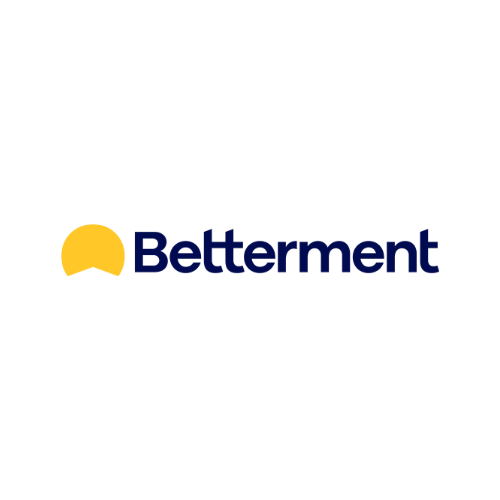Investing for Beginners: A Step by Step Guide
Some products in this article are from our partners. Read our Advertiser Discloser.
Investing your first dollar can feel intense because you want to choose the “perfect” investment. But investing for beginners doesn’t have to be difficult.
It doesn’t matter if you have zero investing experience or currently only invest within your 401k. You can learn some valuable investing ideas reading this guide.
The saying, “There’s no time like the present” holds true for investing. Even if you only start with a $100 investment, that can be the most valuable $100 you ever invest.
Successful investors don’t become rich overnight chasing hot stock tips. It’s from years of consistent investing and earning passive income from dividends and rising share prices.
How to Start Investing
Most of this guide focuses on investing in stocks. We’ll cover a few investment alternatives, too. But, the stock market is the first place to start. It’s easy to build a diversified portfolio with minimal cost.
1. Decide What to Invest In
The first step to start investing is deciding what you want to invest in. For stocks, you essentially have two options. One option is to match the performance of the overall market through index funds (passive investing). If the stock market returns 7%, you make 7%.
The second option is trying to outperform the broad market (active investing). For example, if the market returns 7%, you try to make more than 7%.
Option 1: Index Funds. (The Lazy Way)
- Ideal option if you don’t have the time or desire to be an active investor.
- Index funds are the best option for most beginners.
In most of life, being lazy doesn’t produce good results. But that’s not the case with index funds. This investing approach is also known as “passive income” investing with index funds, you invest in a mutual fund or exchange-traded fund (ETF) that tracks one market index.
For instance, an S&P 500 index fund holds positions in the 500 largest U.S. publicly traded companies. Historically, this index has an average annual return of 7%. S&P 500 index funds have a similar 7% historical rate of return, minus any investing fees.
According to this report most actively managed funds don’t beat their benchmark indexes. This is partly because active funds have more investing fees, which reduce your total returns. The other reason is because it’s nearly impossible to pick winning stocks every single year.
After all, S&P Dow Jones Indices reports that the performance of 76% of large-cap fund managers trailed the S&P 500 index from 2013 to 2018. In short, you would have made more money with an index fund and only trying to match market performance than one of these large-cap fund managers did.
How to Invest in Index Funds
You will find index funds in your 401k plan or your online brokerage. Another option is to use an automated investing platform like Betterment. It invests your cash in stock and bond index funds to create a diversified portfolio for you.
There are index funds for every major U.S. and international stock and bond index. You should start with an S&P 500 index fund, as it tracks some of the most stable companies in the U.S. The S&P 500 doesn’t have the highest earning potential, but it’s less volatile than smaller market sectors.
You should also consider investing outside the S&P 500 to diversify your portfolio. For instance, you could invest in index funds that track smaller companies (small-cap or mid-cap), foreign markets, or bonds.
After all, the S&P 500 might have a bad year but the Russell 2000 index (2,000 small, U.S.-listed companies) or global markets might be thriving.
To help you pick the right asset allocation, most brokerages offer an investing goals quiz. Based on your responses, they recommend different stock and bond indices to invest in.
They also recommend which industry sectors should make up your portfolio, and how much of your portfolio each sector should comprise.
Most brokers offer their in-house index funds for free (minus fund fees). For instance, if you invest with Vanguard, you won’t pay the usual $6.95 trade fees for any Vanguard index funds.
Option 2: Choose Your Own Stocks. (The Harder Way)
This is ideal if you want to try to beat the market. To make it work, you’ll need the time to research individual stocks
Choosing stocks is more difficult and time-intensive. It is also riskier because you invest in fewer companies compared to an index fund. By the same token, if you pick the right stocks, your returns will be higher than with an index fund.
View choosing your own stocks as a next step in your investing. Only try it if you feel comfortable investing in something besides index funds. Continue using index funds as the foundation of your portfolio to minimize downside risk.
How To Invest in Stocks
You can buy almost any stock or active fund from your online broker. With Ally Invest, it costs $0 to trade shares of stocks and ETFs.
For expert advice, you can use a service like Motley Fool Stock Advisor to invest in individual stocks. Twice a month, it recommends stocks that can outperform the broad market for the next three to five years.
Picking the right stocks can hedge against broad market declines that index funds experience, too.
Another stock investing option is “sector funds.” These funds focus on specific sectors or company types. For instance, you can invest in banks, utilities, technology or military funds. These sectors might perform better than the broad market.
Sector ETFs are easier to invest in than hand-picking individual stocks. But these ETFs are riskier than a broader market index fund since you invest in a narrow market index.
With a broad market index fund such as the S&P 500, you hold companies from many industry sectors. In that case, winning sectors can offset the losses of losing sectors.
2. Choose Your Investing Horizon
Before you invest, answer these two questions:
- What do I want to invest in?
- How soon do I need my money?
Besides deciding if you want to invest in index funds and other investments, you need to decide when you want to access your earnings.
The type of account you have determines how soon you can touch your money penalty-free. And, how you pay taxes on your investment gains.
You might decide to invest in a tax-advantaged retirement account first because of the tax benefits of 401k and Roth IRA accounts.
But, you can’t touch this money penalty-free until you turn 59 ½ years old. If you’re 20 years old, that’s four decades before you can reap your investment returns.
So, you should also consider investing with a non-retirement account. Although your investment income in these accounts is taxable each year, you can always make penalty-free withdrawals.
However, investing is more volatile than keeping your money in a bank account. So, you should only consider keeping money in your investment account that you don’t plan on needing for at least three to five years.
A Charles Schwab study shows that the average bear market (when stock prices fall at least 20% from the 52-week high) lasts 18 months. The same study shows that bull markets (rising stock prices) last up to five years.
If you invest right before the bear market begins, it can take several years for your share prices to recover and show a profit.
Investing is effective at building long-term wealth. You’re not guaranteed to make money with a short time horizon.
If you need more proof, look at calendar year 2018. The S&P 500 reached all-time highs in September and closed down 6.24% for the year. If you were counting on making money in 2018 to spend in 2019, your dream most likely didn’t come true.
Try Retirement Accounts First
The best place to start investing can be your retirement accounts because they allow you to save money on taxes. This is especially true if your employer matches your 401k contributions. But as we said before, you can’t touch this money penalty-free until you’re 59 ½.
Traditional 401k or IRA accounts reduce your taxable income for the current tax year. The contributions and earnings grow tax-deferred. You pay taxes on the withdrawal amount in the year you make the withdrawal, which is usually in your retirement.
You fund Roth 401k and Roth IRA accounts with after-tax income. So, the year that you fund those accounts, you pay taxes on the income you fund them with.
But, you never pay taxes on the original contribution — or the earnings — again. This is a big deal. An initial $5,500 Roth contribution may earn tens of thousands of dollars over the years, and you won’t pay taxes on any of that.
With IRA accounts, you can buy index funds, active funds and individual stocks. If you decide to start with index funds, you can always choose stocks or active mutual funds later on.
Most 401k accounts only offer a few dozen mutual funds and your company stock. This can be a blessing for beginner investors, because it avoids the problem of too much choice. But you have to hope that you have a good plan with low-cost index funds.
Use a Taxable Brokerage Account for Non-Retirement Investments
You should also invest with a non-retirement account. Most online brokers call these “taxable brokerage accounts.”
Any gains you earn (either from dividends or by selling an investment at a profit) in these accounts are taxable. The benefit of non-retirement accounts is that, unlike retirement accounts, you have instant access to your cash when you need it.
If you need to, you can invest today and sell your gains whenever you need to pay for large expenses that you might otherwise have to borrow money for.
3. Choose an Online Brokerage
Picking a broker can be as important as deciding what you’re going to invest in. A few investing platforms only let you invest in specific products like index funds. Others let you invest in individual stocks and active funds, too.
You may choose a brokerage that lets you invest passively and actively. Or, you may first choose a brokerage that only sells index funds.
Then, open a full-service brokerage account later for stocks.
Below are a few of the best investing apps and which types of investors they’re best for.
Betterment
Best for: index investing and investors wanting a “hands-off” experience.
When you only want to invest in index funds, Betterment is one of the best options. Investors of all experience levels may like Betterment’s fully automated approach.
When you join, you take an investment questionnaire that helps you determine your investing goals. Based on your investment horizon and current age, Betterment invests in a basket of stock and bond index ETFs.
You only need to fund your account with $1 to make your first investment.
Betterment also handles those mundane investing tasks that too many investors neglect. These tasks include portfolio rebalancing and tax-loss harvesting to maintain a diversified portfolio.
As you near retirement, Betterment also shifts your holdings to be more risk-averse. Holding a higher percentage of low-risk bonds in your portfolio reduces your risk of “losing everything” to a stock market downturn right before you retire.
While you’re young, you should own more stocks to capture more upside growth potential. But as you age, you want to reduce your stock holdings.
Wealthsimple
- Best for investors who want to invest in socially-responsible companies and who want automated investing.
A growing investing trend is investing in companies with a defined social mission. This is socially responsible investing (SRI). Wealthsimple offers automated investing for SRI and non-SRI investing.
If you opt for socially responsible investing, you will invest in ETFs that subscribe to some of these goals: low carbon, gender diversity and affordable housing.
M1 Finance
- Best for 100% free investing in index funds and individual stocks.
For free investing apps, M1 Finance is one of the best. It lets you invest in almost any ETF or individual stock that trades on the major U.S. stock exchanges.
You can invest solely in index fund ETFs, or you can hold stocks, too. M1 charges $0 in trade fees for any investment option. This saves you at least $4.95 each time you buy or sell shares of a stock.
And, you can buy partial shares of any ETF or stock. Let’s say you only have $100 to invest, but a single share costs $63. M1 lets you buy 1.58 shares, so your entire $100 gets invested. With other brokerages, you can only buy one share, and the remaining $37 sits on the sidelines.
A unique thing about M1 Finance is that you assign a percentage allocations to each holding. This is similar to the way you assign investments in your 401k. For example, you might assign 10 investments each a 10% allocation.
In that case, for every $10 you invest, M1 invests $1 in each holding.
Robinhood
- Best for DIY investors who want to buy full shares of stocks and ETFs.
Another free investing app that beginner investors enjoy is Robinhood. You don’t pay any trade fees and you get a free share of stock when you join.
A lot of DIY investors prefer Robinhood because you can trade shares in real time. With other free investing apps, you must submit trade requests before the once-daily trading window opens.
This lack of control can be a nuisance if you enjoy full investing control.
One downside to Robinhood is that you must buy full shares of stock. Of the free investing apps, Robinhood is most similar to a full-service online broker, except you don’t pay a $4.95 broker commission each time you buy or sell stock shares.
Ally Invest
- Best for investors who want research tools.
Some of the research tools that can help you trade stock include a profit/loss graph and over 90 chart studies. You don’t need these tools to invest in index funds. But they come in handy when picking sector ETFs or individual stocks.
The Same Brokerage As Your 401k Provider
To minimize the investing learning curve, you might use the same broker that your 401k plan is with. For most people, that’s Fidelity, TD Ameritrade or Vanguard.
These three brokerages all offer commission-free index funds. There are slight differences in the portfolio allocation and fund fees. But, the performance is nearly identical. Choose the brokerage you like best and you’ll be happy with their index fund offerings.
4. Start Investing
After opening your retirement and non-retirement accounts, the next step is earning passive income.
If you use an automated investing app like Betterment or Wealthsimple, they choose the funds and buy shares.
When you use a self-directed brokerage like Robinhood, you have to decide what index funds or stocks to buy. If you’re not ready to make these decisions, maybe that’s a hint to use an automated investing app. This way, you’re at least invested in the market.
Reinvest Dividends?
Another decision you might have to make is whether to reinvest dividends.
At least once a year, most index funds and many stocks pay a dividend. Most brokerages give you the option to reinvest the dividends to buy more shares of that stock. Or, you can invest in a different stock or transfer the dividends to your savings account.
To maximize your compound interest, you might decide to reinvest the dividends. This is a free way to buy partial shares of stock. And these new shares will begin paying dividends themselves.
Schedule Monthly Investments
To keep the investment momentum going, schedule monthly contributions. At a minimum, aim to invest 10% of your income in your various investment accounts.
With index mutual funds, you can have your brokerage invest all of your money into the fund each month.
If you prefer to invest in index fund ETFs (which usually have lower fund expenses than index mutual funds), Betterment and M1 Finance let you buy partial shares so all of your money gets invested each month.
Remember, not every online broker lets you buy partial ETF shares.
For example, if you buy ETFs through an online broker such as Vanguard, you must buy full shares. If you invest $100 monthly and an ETF share costs $95, you get one share and the remaining $5 doesn’t get invested.
It’s important to note that you don’t have to schedule automatic investments to invest monthly. But, if you’re likely to forget to manually invest your cash, it’s a good idea to schedule recurring investments.
This is what I do to make sure I never forget.
Making consistent investments on the same day(s) each month also keeps you from trying to time the market. Since you’re investing for the long term, today’s share price doesn’t matter as much as you think.
Also, waiting for a “perfect” share price means you may never invest.
If you want to “dollar cost average” your investments, automatic investing makes this strategy easy. We’ll talk about dollar cost averaging in further detail below.
One reason why you might not schedule automatic investments is if you want to invest in different funds each month to maintain a balanced portfolio. Or, you invest in ETFs and individual stocks for which your broker doesn’t permit automatic investing.
Stock Market Alternatives for Beginner Investors
Index funds and the stock market are the best starting place for most beginner investors. There are two main reasons why. The first is the low minimum required investment.
The second is that stocks are more liquid than some of the alternatives listed below, where your money might be inaccessible for up to five years.
But if you want to further diversify your portfolio, you can consider these investing ideas. You might like these ideas as a hedge against stock market volatility.
While these investments can still lose money, they might post positive returns when the market has a down year.
Crowdfunded Real Estate
On the stock market, you can buy public real estate stocks and index funds. Conversely, crowdfunded real estate lets you invest in private real estate deals just like the rich do.
You can earn annual returns of between 5% and 12% with crowdfunded real estate. Your average annual return can be similar or slightly higher than investing in index funds. In most cases, the main trade-off is that you can’t withdraw your money fee-free for five years.
With a $500 initial investment, Fundrise invests your money in real estate. You don’t need to have any real estate investing experience to use Streitwise.
There is a one-year lockout period on your invested funds, and in fact, to receive the full redemption value, your funds must be invested for at least five years. So, treat your Streitwise investments as the equivalent of a five-year CD.
Peer Lending
When you deposit money into a bank, you earn a small amount of interest. What you might not realize is that the bank earns that interest by lending your money to borrowers who take out loans.
Instead of letting the bank earn that money, LendingClub lets you be the bank.
You can invest in 3-year and 5-year personal loan requests that let you earn monthly interest payments from borrowers. If borrowers default on the loan, you lose your investment (it does happen), but expect annual returns of between 3% and 8%.
To make peer-to-peer investing easier, LendingClub offers an automated investing tool. This feature spreads your investment across many borrowers to reduce risk.
Invest in Business Loans
You can also invest in business bonds with Worthy Bonds for a 5.5% annual return. These loans invest in businesses with secured collateral. If the borrower defaults, Worthy can collect these assets to pay back investors.
Each loan has a 36-month investment term. However, you can make penalty-free early withdrawals. The lack of fees is a rare exception for crowdfunded investing.
Keep Your Money in a Bank Account
Continuing to keep your money in the bank instead of stocks or these other alternate ideas isn’t investing. Your bank deposits earn less than the inflation rate, which is 2% to 3% for most years.
But, for your emergency fund and spare cash, you want low risk and instant access. Therefore, consider keeping them in a high-yield bank account.
Most local banks pay 0.10% annual interest, but online banks pay at or near 2%. On a $1,000 balance, you’d earn $20 in interest in a year. That compares to only $1 a year you’d earn on an account paying 0.10%..
And, if your bank charges account fees, you’re actually paying your bank to keep your money. Those fees might be more than the interest you earn if you have a small balance.
Aspiration Bank has some of the highest rates for online savings accounts. You’ll pay nothing in service fees and only need $10 to open an account.
For peace of mind, their accounts are FDIC-insured in the off chance that Aspiration Bank defaults.
FAQs
When you have minimal investing experience, the whole investing process can be confusing. While the best way to learn to invest is through experience, these questions can help you avoid common investing mistakes.
How Do Stocks Earn Passive Income?
Whether you invest in individual stocks, index funds, or active ETFs, there are two ways you can make money.
One way is by asset appreciation. For instance, you buy 10 shares of stock at $50 and sell them for $60 each. You make $100 total, but don’t see this profit until you sell.
The other way to earn money on stocks is through dividends. Most companies and funds pay dividends on a quarterly or annual basis.
This is recurring income you earn as long as you own the stock. You can either reinvest the dividends or use the cash for other purchases.
What’s the Difference Between Stocks and Bonds?
Stocks and bonds are two different ways to invest in a company. Stocks are the most common way. Each share you own gives you an equity stake in the company and gives you one vote at annual shareholder meetings.
And, you can earn dividends on a quarterly or annual basis.
Regarding your shareholder voting rights, you can only vote if you own actual shares of the company. You don’t get to vote if you invest with index funds.
Bonds are considered less risky than stocks. This is because bondholders get paid first if a company goes bankrupt. You lend money to companies or the government. In exchange, you receive “coupon” payments (interest) from the borrower.
Bondholders can’t vote in shareholder meetings.
Stocks have more earning potential, but they are riskier than bonds. As you near retirement, you should shift from owning more stocks to owning more bonds. For instance, you might own 90% stocks as a 20-year-old investor. But, you might own 60% stocks when you retire.
What Are Full Shares and Partial Shares?
Another term that can be confusing for beginner investors is full shares of stock. Until very recently, the only way to trade individual stocks and ETFs was to buy or sell full shares of stock.
With full shares, if a stock costs $50, you must have $50 cash to buy one share. You can’t get a partial share if you only have $40. You must wait until you have $50 to buy a full share.
In the past, only mutual funds offered partial shares. This is because they focus more on the amount of money you invest instead of the number of shares you want to buy. Some brokerages, including M1 Finance, let you buy partial shares of individual stocks and ETFs.
Partial shares make it easy because every single penny invests. That way, you don’t have cash sitting idle until you have enough to buy full shares.
Index Funds vs. Target Date Funds
In your 401k or self-directed brokerage account, you might see index funds and target date funds.
An index fund is a fund that holds individual stock shares. Target date funds are “funds of funds” that invest in several stock and bond index funds. If you don’t want to rebalance your portfolio yourself, target date funds may be good because they rebalance your portfolio over time. They’re designed to become more risk-averse as you near retirement.
Target date funds are similar to the automated investing approach that Betterment pursues. But, you need to compare target date fund expenses to using an automated investing app.
You should also compare them to investing in the same index funds yourself if you have the time to manage your own portfolio.
Keep in mind that target date funds are convenient and can produce long-term wealth. But they might not have the same risk tolerance as you do.
What’s the Difference Between a Mutual Fund and an ETF?
Mutual funds and ETFs both let you invest in a basket of stocks or bonds. But there are a few differences in how each product trades.
Index funds and active funds come as both mutual funds and ETFs.
ETFs trade like stocks in real time, and the share price constantly fluctuates. You invest in ETFs by the share, and most brokers don’t let you buy partial shares.
But, ETFs usually have lower fund expenses than their mutual fund counterparts. This means more of your money gets invested instead of going toward paying investing fees.
The more money you invest, the more shares you earn and the more you can earn in dividends.
Mutual funds only trade once a day after the market closes. However, you must execute your trade during market hours. You can buy partial shares of mutual funds.
The downside of mutual funds is that you may have to make a large initial investment of $3,000 to open a position. Once you open a position, you may only have to invest $1 or $100 for future share purchases.
Because ETFs are cheaper to trade and usually have lower investment minimums, they can be a better option than mutual funds for your personal investing accounts. The largest exception is your 401k since most still don’t offer ETFs.
Dollar Cost Averaging vs. Lump Sum Investing
There are two investing frequencies you can pursue when investing. For most investors, dollar cost averaging is the better option because you don’t try to time the market. And, you can invest small sums of money instead of large sums.
Dollar cost averaging is where you invest the same amount of money each month. For example, every month you invest $100 into an S&P 500 index fund. When shares are more expensive, you buy fewer of them.
When they’re lower, you buy more. That keeps you from overreacting to market swings. It helps keep your investment momentum going.
Lump sum investing is making large one-time investments. For instance, you invest a Christmas bonus or money you’ve saved up for several months.
Investing a large lump sum may make sense when you have to meet a big investment minimum like $3,000 for a Vanguard mutual fund.
One risk for lump sum investing is the temptation to time the market. You might wait for a stock or fund price to dip before you invest. Most investors can’t predict how the market will perform from one day to the next.
Before you know it, you never invest. Or, you invest at a market peak right before share prices drop sharply.
Summary
Investing for beginners doesn’t have to be difficult. The easiest and cheapest way to earn consistent positive returns is investing in index funds.
If you’re willing to add more risk, you can consider investing in individual stocks. Now, it’s time to start investing.
All opinions expressed in this article are the authors. We are compensated by businesses that are mentioned in this article through affiliate links.







